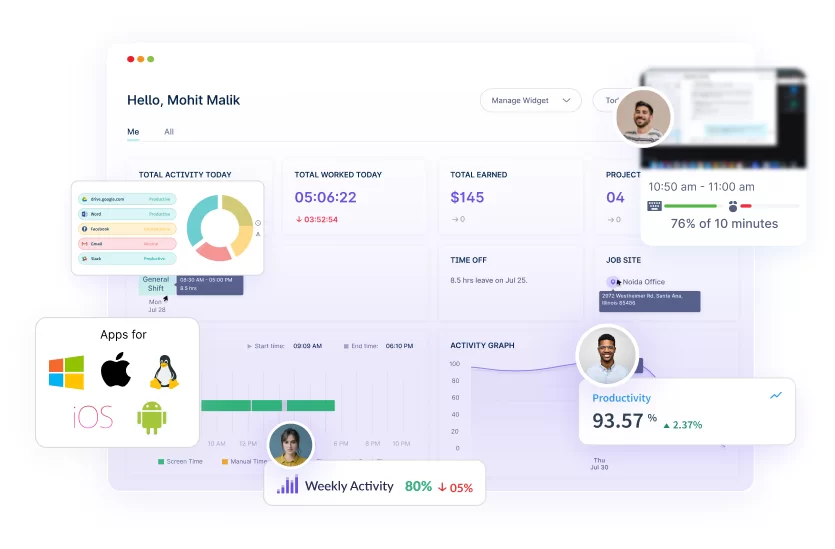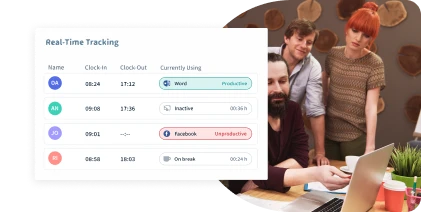Table of Contents
Workaholism is a prevalent phenomenon in the highly competitive business world.
It refers to an excessive and compulsive drive to work, often at the expense of personal well-being and relationships.
The practice of Workaholism leads to the following serious problems:
- Decreased productivity
- Relationship strain
- Burnout
- Lack of work-life balance
- Decline in physical health
By understanding workaholism better, we can take steps towards creating a healthier work-life balance and promoting well-being.
In this blog post, we will look at the signs, symptoms, and effects of workaholism. And how you can put a limit to workaholism.
Let’s dive in:
Signs and Symptoms of Workaholism
Here are some signs and symptoms of Workaholism:
Constantly Thinking About Work
Workaholics find it difficult to switch off their thoughts about work even when not physically present.
They may constantly dwell on work-related tasks, projects, and deadlines, which can lead to a preoccupation with work and difficulty focusing on other aspects of life.
Difficulty Disconnecting from Work
Workaholics have trouble disconnecting from work, even during non-working hours or vacations.
They may feel compelled to check work emails, respond to work-related messages, or engage in work-related activities even when they should be taking time for themselves or spending it with loved ones.
Physical and Emotional Exhaustion
Workaholism often leads to physical and emotional exhaustion.
The relentless pursuit of work and the constant pressure to perform at a high level can result in the following:
- Chronic fatigue
- Sleep disturbances
- Increased stress levels
Workaholics may experience feelings of overwhelm, irritability, and a sense of being emotionally drained.
Neglecting Self-Care and Health
Workaholics often neglect their own self-care and compromise their physical and mental well-being.
They may do the following to meet work demands:
- Skip meals
- Neglect exercise
- Sacrifice sleep
This neglect of self-care can weaken the immune system and increase vulnerability to illnesses and health problems.
Identifying Workaholic Behavior with Workstatus
Workstatus, a powerful tool, offers valuable features that help companies track work hours, monitor work patterns and workload, and identify the risk of overworking and burnout.
Workstatus provides a great way to recognize workaholic behavior early on, allowing for timely intervention and promoting a healthier work-life balance.

Here is what you can do with Workstatus:
Track Work Hours and Breaks
Work Hours Calculation: Calculate actual work hours logged by employees on a daily, weekly, or monthly basis. It helps identify if individuals consistently work long hours, indicating potential workaholic behavior

Real-Time Data: Get insights into the average number of hours worked per day or week to identify any patterns of consistently working long hours. It empowers organizations to address workaholism and promote a healthier and more sustainable work environment.

Track Breaks: Monitor break duration and frequency to ensure employees take regular rest and rejuvenation breaks. You can use this data to encourage employees to prioritize breaks, foster a culture of self-care, and maintain a healthy work-life balance.
![]()
Monitor Work Patterns and Workload
Task Management: Managing and tracking tasks assigned to employees, including deadlines and task completion rates. It lets you assign tasks based on employees’ capabilities and workload capacity, preventing overloading and workaholic tendencies.

Workload Analysis: Assessing workload distribution across teams or individuals to identify imbalances. By identifying imbalances, organizations can address any excessive workloads, prevent burnout, and promote a productive work environment where employees feel supported.

Work Pattern Tracking: Monitoring employees’ work patterns, such as consistent overtime or weekend work. It helps companies understand if certain individuals consistently take on excessive workloads or if work is not appropriately delegated, leading to potential burnout risks.

Identify Overworking and Burnout Risk
Overtime Tracking: Monitoring and tracking employees’ overtime hours to identify excessive overworking. It helps identify individuals who consistently exceed regular work hours, indicating potential workaholic behavior or a heavy workload.

Burnout Risk Assessment: Analyzing stress levels, productivity indicators, and absenteeism to assess the risk of burnout. Monitoring absenteeism rates and patterns can offer insights into potential burnout as employees may take more sick days or time off due to burnout-related symptoms.

Workstatus can help organizations identify workaholic behavior and recognize signs of overworking and burnout risk.
Furthermore, based on the data captured, you can take proactive measures to promote a healthier work environment and employee well-being.
Effects of Workaholism
Here are the major effects of Workaholism:
Burnout and Decreased Productivity
The relentless pursuit of work without adequate rest and recovery can deplete an individual’s energy and motivation.
The excessive workload, long hours, and constant pressure to perform contribute to burnout.
Burnout results in decreased productivity, difficulty concentrating, and increased errors or mistakes in work tasks.
Relationship and Family Problems
Workaholism can strain personal relationships and lead to difficulty maintaining a healthy work-life balance.
The following relationship problems can arise due to workaholic behavior.
- Communication breakdown
- Emotional distance
- Isolation
The excessive focus on work may result in neglecting quality time with family and loved ones.
Mental Health Challenges
Workaholics are at a higher risk of experiencing mental health challenges.
The constant pressure to excel and the fear of failure can contribute to high levels of:
- Stress
- Anxiety
- Depression
The persistent drive to work excessively can negatively impact an individual’s mental well-being, affecting their quality of life.
Lack of Work-Life Balance
Workaholism often disrupts the balance between work and personal life.
The excessive dedication to work can lead to neglect of the following:
- Personal interests
- Hobbies
- Self-care activities
This lack of balance can result in increased stress, dissatisfaction, and a diminished sense of fulfillment in life beyond work.
Workstatus provides valuable insights for a healthier work environment that prioritizes productivity and personal well-being.
Top 4 Risk Factors of Workaholism
Here are some major risk factors related to Workaholism:
Personality Traits and Perfectionism
- Certain personality traits, such as being highly achievement-oriented, ambitious, or having a Type A personality, increase the risk of workaholism
- Perfectionism, the tendency to set excessively high standards for oneself, can contribute to workaholic behavior by driving individuals to work excessively to meet those standards
External Pressures and Expectations
- External pressures from the workplace, society, or personal expectations can contribute to workaholism
- High job demands, intense competition, and the need to meet deadlines or targets can create a sense of urgency and drive individuals to work compulsively and excessively
Job Demands and Culture
- Workaholism can be influenced by the nature of job demands and the prevailing work culture
- Jobs that require long working hours, high levels of responsibility, or constant availability can increase the risk of workaholism
- Work cultures that prioritize and reward long hours, overwork, or excessive dedication to work can also foster workaholic behavior
Psychological Factors
- Psychological factors such as fear of failure, low self-esteem, or an excessive need for approval can contribute to workaholism
- Workaholism can serve as a coping mechanism to escape negative emotions, gain validation, or boost self-esteem through work achievements
Closing Thoughts
Workaholism is a prevalent issue with detrimental effects on individuals and their work-life balance.
Promoting a healthier work-life balance and fostering a supportive work environment is key in combating workaholism.
Tools like Workstatus can help organizations take proactive measures to address the problem by ensuring sustainable productivity and satisfaction in work and personal life.
FAQs
Q. Can workaholism be treated or managed?
Ans. Yes, workaholism can be treated and managed. It often involves recognizing the problem, seeking support from professionals or support groups, setting boundaries, prioritizing self-care, and finding a healthier work-life balance through time management and stress reduction techniques.
Q. How can Workstatus help identify workaholic behavior?
Ans. Workstatus helps identify workaholic behavior by tracking work hours, breaks, and work patterns.
It provides insights into excessive work hours, consistency over time, and working patterns during personal time, allowing organizations to recognize workaholic tendencies.
Q. Can Workstatus detect workaholism in remote work settings?
Ans. Yes, Workstatus is designed to monitor work behavior in both remote and traditional office settings.
It tracks work hours, breaks, and workload regardless of location, enabling organizations to manage workaholic behavior regardless of the work environment.









